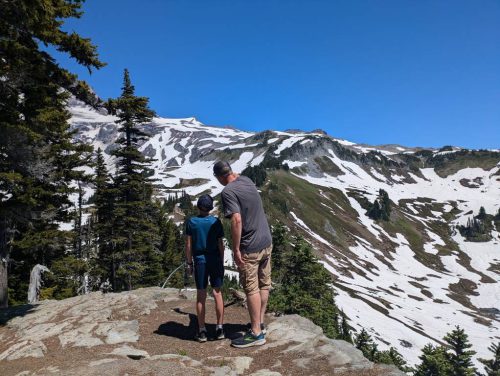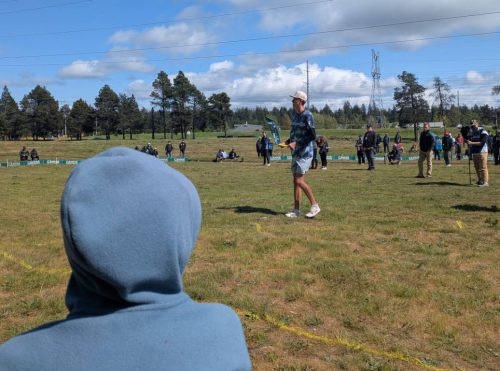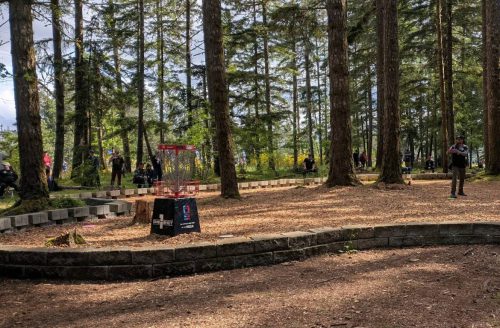For many years, we have gone on a summer camping trip with Tyla’s family and the tradition continued this year. I don’t think most of us had heard of Ike Kinswa State Park before but we decided to give it a shot. It’s located northwest of Mt. St. Helens and southwest of Mt. Rainier.
We arrived on a Saturday and left on a Tuesday to try to avoid some traffic, and the traffic part worked well but it made booking difficult. State parks book up extremely quickly so you need to jump online right at 7am, 9 months in advance of the first day of your trip. Since our trip started Saturday, that meant that all the Thursday and Friday campers got first dibs. Thankfully we still found a couple pretty nice sites close together.
The park itself was nice. It sits on a reservoir behind one of two dams on the Cowlitz River. We spent Sunday driving around to explore the dams and play disc golf. On Monday we went up to Paradise Visitor Center on the south side of Rainer. Some of us took a short (but steep) hike up to Alta Vista. The trail almost had too much snow for us to make it but we did get to the top of the crest. The weather was perfectly clear and it was fun to point out the hikers going up to Camp Muir. I would love to do that hike with Elijah sometime.
All in all, it was a great trip. I dont’ know that we’ve had many trips with nicer weather. It was in the low to mid 80s during the day and cool enough at night to sleep easily. Thanks to Don and crew for getting the camper ready for this one trip each year and then putting it away again! It makes it a lot easier to do all the cooking and cleaning from the trailer.
Now we have a couple months before it’s time to figure out where to go next year…














Leaving the Nest
A few years ago, Elijah and I built a birdhouse. We looked up all the recommendations for the dimensions of a birdhouse that would work for birds in our area and then waited anxiously. Year after year no birds were using it. Initially we found that the inside was getting wet so we improved the design. Then we wondered if the location was not inviting so we attached it to the house under and overhang where no squirrel could ever reach. We even installed an extra security camera aimed at the box to see if maybe they were using it and we just couldn’t tell. Nothing.
Then finally this year we started seeing a couple chickadees making a lot of trips to/from the birdhouse! Later we heard lots of chirping from the babies. The parents made so many trips back and forth bringing them food. Then finally one day it was quiet.
I scanned the camera footage and I think I found video of all five(?) babies leaving the nest. The internet says 6-8 babies are more common so it’s possible that I missed a couple. I edited it down to about 5 minutes so if you want to check out the riveting footage, it’s there for you to enjoy:
It sounds like there is a small chance that a mating pair would attempt a second brood in one year so we’ll wait until later in the summer to clean out the birdhouse and see what we find.